- Accueil /
- Rubina Raja
Rubina Raja
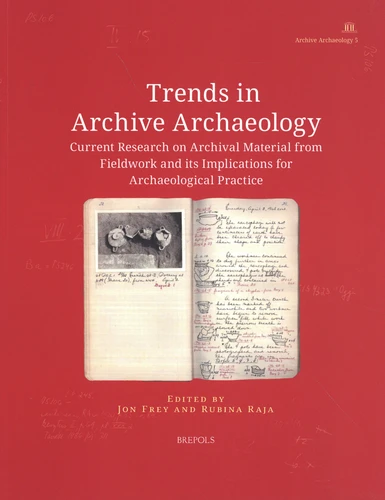
Dernière sortie
Trends in Archive Archaeology
Archive archaeology has, in recent years, become increasingly acknowledged as an important component of archaeological research. However, the vast amounts of empirical data contained in such archives-among them fieldwork diaries, working notebooks, finds sheets, and photographs — together with a sense that the field is often skewed towards 'one's own data', have made it difficult to develop a dear methodological approach that fits all eventualities.
The result is that archive archaeology is still not always recognized for what it can bring to the discipline of archaeology, as a field of study that formes on the contexts within which humanity developed. This volume draws together contributions from scholars who work with archives in a variety of capacities : as fieldwork directors of decades-long excavations ; as archivists interested in the history of collections ; as specialists focusing on certain object groups or regions ; and as researchers broadly interested in what archival material brings to the table in terms of new knowledge about archaeological situations.
In showcasing contributions of work in progress, the chapters published here bring to the fore knowledge about archives that has long been overlooked, and examine how archival archaeology should be shaped in the future so that it can become more firmly integrated within archaeological practice. This is a dedicated series for the publication of monographs and edited collections exploring archival material relating to archaeological and historical materials across the centuries.
The aims of this series are twofold. Firstly, materials and excavation reports can be found in museums and archives around the world, but they are largely unpublished, frequently inaccessible, and typically uncited in scholarship, despite often holding crucial information on sites as wen as objects. This series therefore aims to make this material available to readers for the first time, in combination with new research and wider discussions around the archive material.
Secondly, in the context of wider discussions about handling and disseminating cultural heritage, the series looks to promote research that explores the methodological and theoretical discussions around such material. Combined, these two approaches provide a unique forum for new research into {7<— archival and legacy data.
The result is that archive archaeology is still not always recognized for what it can bring to the discipline of archaeology, as a field of study that formes on the contexts within which humanity developed. This volume draws together contributions from scholars who work with archives in a variety of capacities : as fieldwork directors of decades-long excavations ; as archivists interested in the history of collections ; as specialists focusing on certain object groups or regions ; and as researchers broadly interested in what archival material brings to the table in terms of new knowledge about archaeological situations.
In showcasing contributions of work in progress, the chapters published here bring to the fore knowledge about archives that has long been overlooked, and examine how archival archaeology should be shaped in the future so that it can become more firmly integrated within archaeological practice. This is a dedicated series for the publication of monographs and edited collections exploring archival material relating to archaeological and historical materials across the centuries.
The aims of this series are twofold. Firstly, materials and excavation reports can be found in museums and archives around the world, but they are largely unpublished, frequently inaccessible, and typically uncited in scholarship, despite often holding crucial information on sites as wen as objects. This series therefore aims to make this material available to readers for the first time, in combination with new research and wider discussions around the archive material.
Secondly, in the context of wider discussions about handling and disseminating cultural heritage, the series looks to promote research that explores the methodological and theoretical discussions around such material. Combined, these two approaches provide a unique forum for new research into {7<— archival and legacy data.
Archive archaeology has, in recent years, become increasingly acknowledged as an important component of archaeological research. However, the vast amounts of empirical data contained in such archives-among them fieldwork diaries, working notebooks, finds sheets, and photographs — together with a sense that the field is often skewed towards 'one's own data', have made it difficult to develop a dear methodological approach that fits all eventualities.
The result is that archive archaeology is still not always recognized for what it can bring to the discipline of archaeology, as a field of study that formes on the contexts within which humanity developed. This volume draws together contributions from scholars who work with archives in a variety of capacities : as fieldwork directors of decades-long excavations ; as archivists interested in the history of collections ; as specialists focusing on certain object groups or regions ; and as researchers broadly interested in what archival material brings to the table in terms of new knowledge about archaeological situations.
In showcasing contributions of work in progress, the chapters published here bring to the fore knowledge about archives that has long been overlooked, and examine how archival archaeology should be shaped in the future so that it can become more firmly integrated within archaeological practice. This is a dedicated series for the publication of monographs and edited collections exploring archival material relating to archaeological and historical materials across the centuries.
The aims of this series are twofold. Firstly, materials and excavation reports can be found in museums and archives around the world, but they are largely unpublished, frequently inaccessible, and typically uncited in scholarship, despite often holding crucial information on sites as wen as objects. This series therefore aims to make this material available to readers for the first time, in combination with new research and wider discussions around the archive material.
Secondly, in the context of wider discussions about handling and disseminating cultural heritage, the series looks to promote research that explores the methodological and theoretical discussions around such material. Combined, these two approaches provide a unique forum for new research into {7<— archival and legacy data.
The result is that archive archaeology is still not always recognized for what it can bring to the discipline of archaeology, as a field of study that formes on the contexts within which humanity developed. This volume draws together contributions from scholars who work with archives in a variety of capacities : as fieldwork directors of decades-long excavations ; as archivists interested in the history of collections ; as specialists focusing on certain object groups or regions ; and as researchers broadly interested in what archival material brings to the table in terms of new knowledge about archaeological situations.
In showcasing contributions of work in progress, the chapters published here bring to the fore knowledge about archives that has long been overlooked, and examine how archival archaeology should be shaped in the future so that it can become more firmly integrated within archaeological practice. This is a dedicated series for the publication of monographs and edited collections exploring archival material relating to archaeological and historical materials across the centuries.
The aims of this series are twofold. Firstly, materials and excavation reports can be found in museums and archives around the world, but they are largely unpublished, frequently inaccessible, and typically uncited in scholarship, despite often holding crucial information on sites as wen as objects. This series therefore aims to make this material available to readers for the first time, in combination with new research and wider discussions around the archive material.
Secondly, in the context of wider discussions about handling and disseminating cultural heritage, the series looks to promote research that explores the methodological and theoretical discussions around such material. Combined, these two approaches provide a unique forum for new research into {7<— archival and legacy data.
Les livres de Rubina Raja

Glass, Lamps, and Jerash Bowls. Final Publications from the Danish - German Jerash Northwest Quarter Project III
Achim Lichtenberger, Rubina Raja
89,68 €

126,60 €

Metal Finds and Coins. Final Publications from the Danish - German Jerash Northwest Quarter Project II
Achim Lichtenberger, Rubina Raja
84,40 €

68,58 €

Hellenistic and Roman Gerasa. The Archaeology and History of a Decapolis City
Achim Lichtenberger, Rubina Raja
116,05 €
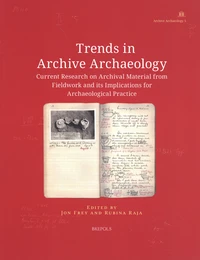
Trends in Archive Archaeology. Current Research on Archival Material from Fieldwork and its Implications for Archaeological Practice
Jon Frey, Rubina Raja
Grand Format
121,30 €
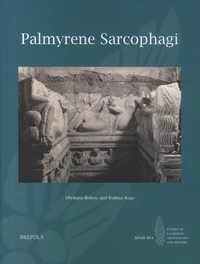
388,20 €
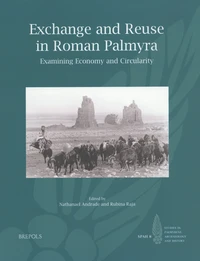
Exchange and Reuse in Roman Palmyra. Examining Economy and Circularity
Nathanael Andrade, Rubina Raja
Grand Format
91,00 €
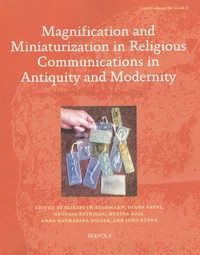
Magnification and Miniaturization in Religious Communications in Antiquity and Modernity. Materialities and Meanings
Elisabeth Begemann, Diana Pavel, Georgia Petridou, Rubina Raja
Grand Format
133,50 €
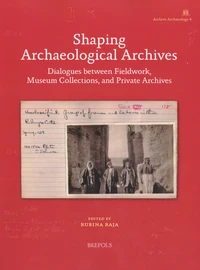
151,70 €
